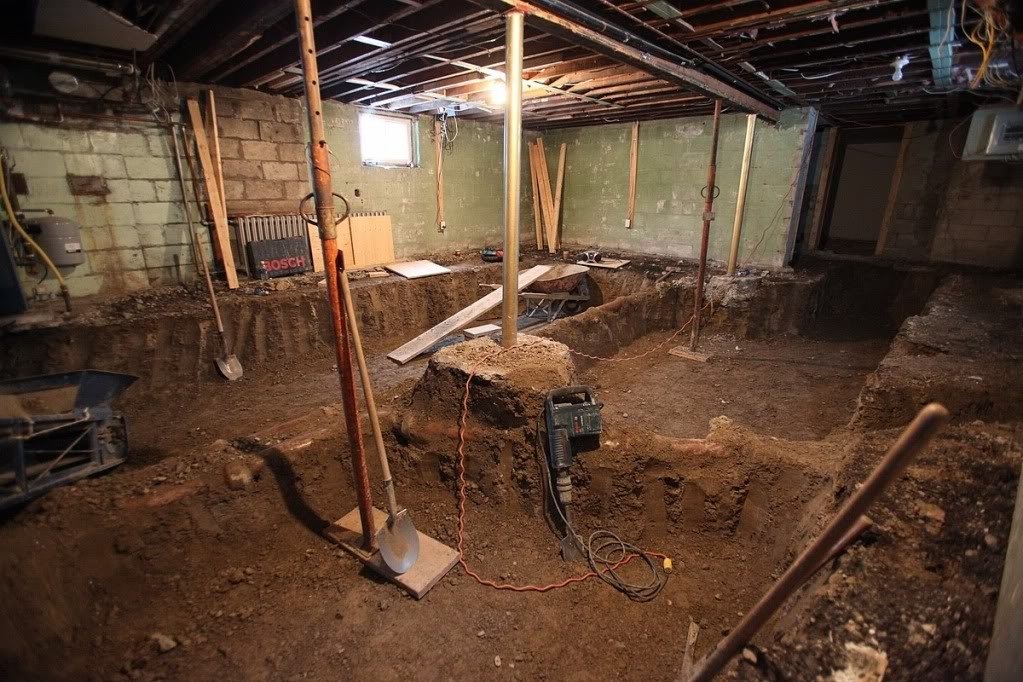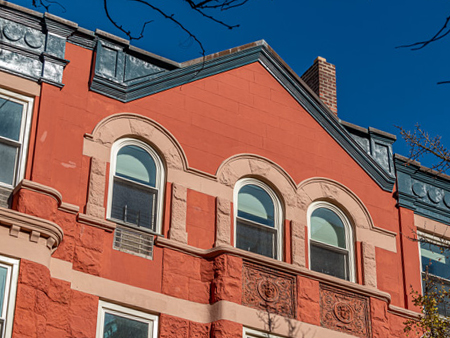Underpinning is a process used to repair, strengthen, or increase the depth of an existing foundation by lowering the footing to allow it to rest on more supportive soil.
While oftentimes underpinning is associated with the remediation of deficient or failing foundations, it is also used in cases where the use of a building has changed, floors are being added to upper stories, or additional depth is desired in subsurface spaces, such as basements or cellars. In dense urban locations, such as New York City, underpinning is also a common practice during the construction of adjoining, adjacent, or nearby structures that require the removal or excavation of the soil supporting the neighboring properties.
The process of underpinning begins by removing or excavating the soil from beneath an existing foundation.
To avoid the risk of undermining the foundation, which may lead to structural failure, the removal of the soil is performed controlled stages, called ‘pins’, of limited length. The depth of the excavation is determined by a geotechnical engineer, who assesses the soil composition to identify the strata that is suitable to bear the weight of the building. The excavated soil is replaced with new material, typically concrete, which forms a new foundation beneath the existing one. Once one of the ‘pins’ is complete, and the concrete is cured, the process is repeated on the next section of the foundation until the entire length of the wall is reinforced.
There are multiple methods of underpinning including:
- Mass Pour
- Beam and Base
- and Mini-Piled
The mass pour method is the most common due to its low cost and ability to resist heavy foundation loads. In this method, a solid, continuous concrete foundation is poured beneath the existing foundation is sections. While this method uses a great deal of material, it is the simplest method to engineer, does not require heavy machinery, and can allow for continuity of use during construction.
A more technically advanced method is the beam and base method, where a reinforced concrete beam is constructed below the entire foundation to replace the existing footing. In this method, the new beam transfers the load to a mass concrete base which spreads the load evenly across the soil. While more advanced in its design, the feasibility of this methods largely depends on the structural configuration of the building above the foundation.
Where ground conditions are variable or access around the area of the foundation is limited, the mini-piled method of underpinning may be used. In this method, ‘piles’ or deep vertical structural elements are driven into the ground in drilled holes deep enough to allow the piles to rest on stable soil. The piles typically extend at least 15’ below ground, but depending on the soil condition, are capable to depths of over 50’. While this method can overcome even the most adverse soil conditions, the engineering is more involved, and the process can prove to be quite expensive due to the technical expertise and specialty equipment required.
If you are planning on performing structural work on your existing property – either elective or as part of a remediation program – it is important to hire a firm with extensive experience working closely with structural engineers, geotechnical engineers, and the NYC Department of Buildings to mitigate the risk of negatively impacting your property and those adjacent to you.
If you have any questions about performing work on your existing building, do not hesitate to contact us.




